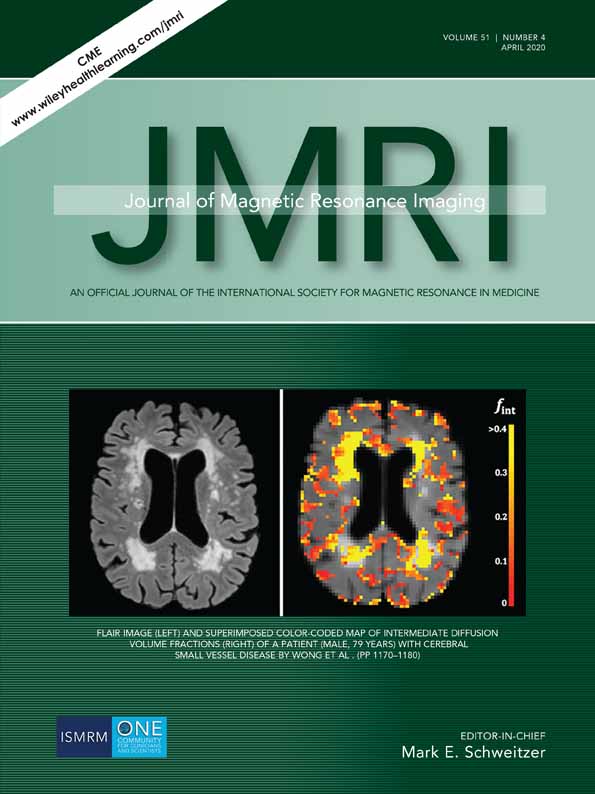Reliability of 3D texture analysis: A multicenter MRI study of the brain
Abstract
Background
Texture analysis (TA) is an image-analysis technique that detects complex intervoxel statistical patterns. 3D TA has shown potential in detecting cerebral degeneration not perceptible to the human eye in many neurological disorders. The reliability of this method's application in a multicenter study is unknown.
Purpose
To assess the intrasite and intersite reliability of a novel 3D TA method from data acquired systematically from the Canadian ALS Neuroimaging Consortium (CALSNIC).
Study Type
Prospective multicenter data with harmonized MR sequence parameters acquired from five sites.
Population
Six healthy subjects.
Field Strength
3T 3D-MPRAGE and 3D-SPGR T1-weighted MRI of the brain.
Assessment
Voxel-based 3D TA was performed on the whole brain to produce texture maps.
Statistical Tests
Intra- and intersite reliability of texture features was assessed using a two-way mixed-effects model for intraclass correlation coefficients (ICC). ICCs were calculated in a region-of-interest (ROI) analysis of predetermined anatomically relevant areas. A voxelwise approach was used to assess the whole brain.
Results
In the ROI analyses, intrasite reliability was excellent (ICC > 0.75) across most regions and texture features (autocorrelation [autoc], contrast [contr], energy [energ]). Intersite reliability was excellent for most regions with autoc, ranging from fair to excellent for contr, and ICCs ranging from poor to good (<0.40–0.75) for energ. Voxelwise analyses revealed a large range in ICC across the brain for both intrasite and intersite ICCs (0.0–0.90), with higher reliability in the cortical gray matter compared with deeper subcortical structures.
Data Conclusion
Overall, the reliability of 3D TA was highly dependent on texture feature, region studied, and method of analysis (ROI or voxelwise). Intrasite reproducibility was good to excellent, and better than intersite. ROI-based analyses present higher reliability in comparison with voxelwise analyses. Autoc has overall excellent reliability. These factors might be considered when designing future 3D TA studies.
Level of Evidence: 2
Technical Efficacy: Stage 1
J. Magn. Reson. Imaging 2020;51:1200–1209.




